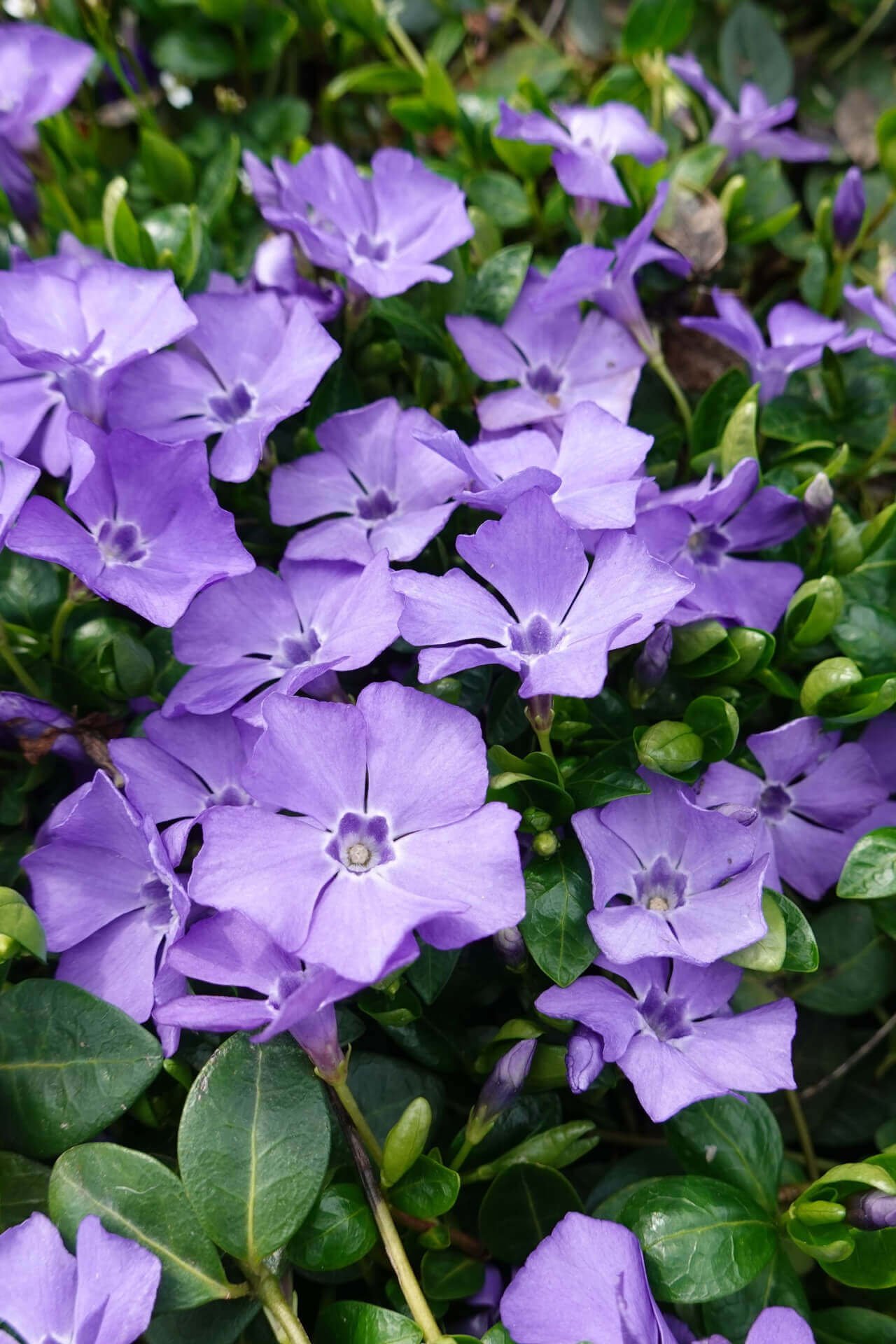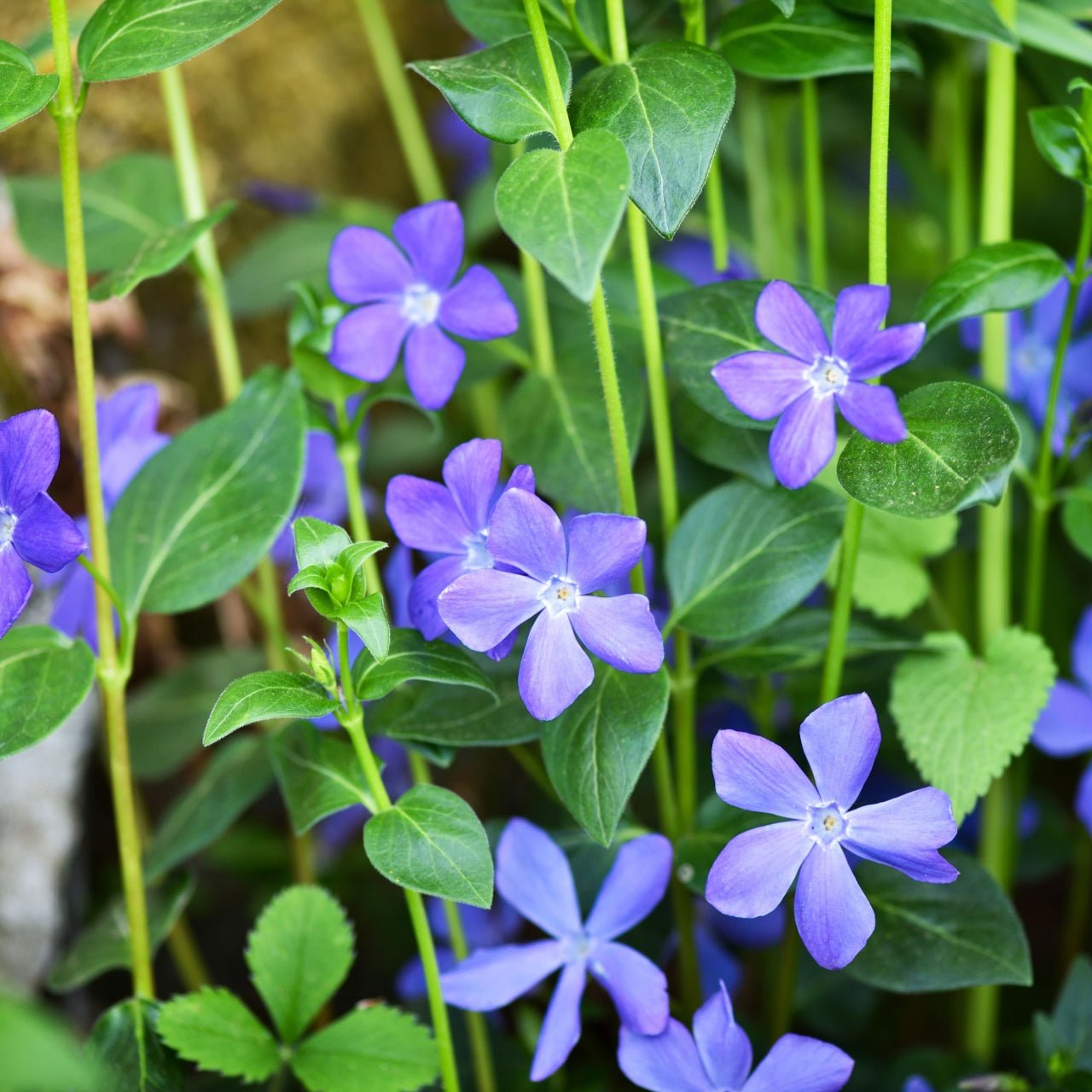Enchanting Beauty: The Allure of Creeping Myrtle in Your Garden
In the world of gardening and landscaping, selecting plants enhances the visual appeal of outdoor spaces and brings enchantment to the environment. One such plant that has captured the hearts of many garden enthusiasts is Creeping Myrtle, scientifically known as Vinca Minor. With its delicate blooms, lush green foliage, and versatile nature, Creeping Myrtle has become a staple in gardens and landscapes, adding a unique charm that effortlessly transforms ordinary spaces into mesmerizing havens of beauty.
Introduction to Creeping Myrtle:
Creeping Myrtle, also commonly referred to as Periwinkle or Vinca, is a low-growing evergreen perennial plant that belongs to the Apocynaceae family. Native to parts of Europe, this enchanting plant has found its way into gardens worldwide, where its adaptability and stunning characteristics have made it a favorite among gardeners. Creeping Myrtle features small, star-shaped flowers blooming in shades of blue, lavender, and white. Its glossy leaves provide an attractive backdrop to the blossoms, creating a captivating, harmonious blend of colors.
A Carpet of Color:
One of the most striking features of Creeping Myrtle is its ability to form a lush and vibrant ground cover that blankets the landscape with a carpet of color. The trailing nature of the plant allows it to spread and weave effortlessly, creating a dense covering that effectively suppresses weed growth while adding an elegant touch to the terrain. Creeping Myrtle's ability to create a seamless sea of blooms is genuinely enchanting, whether used as an underplanting for larger shrubs and trees, as a border along pathways, or as a feature in rock gardens.<>Enduring Beauty:
One of the reasons Creeping Myrtle remains a popular choice for gardeners is its resilience and ability to thrive in various conditions. This perennial plant is known for its adaptability to different soil types and light conditions. Whether your garden receives full sun, partial shade, or dappled sunlight, Creeping Myrtle will reward you with its year-round greenery and occasional bursts of colorful blossoms. Its hardy nature makes it an ideal candidate for areas with varying climates, adding a touch of enduring beauty to any landscape.
Versatility in Design: The enchantment of Creeping Myrtle lies in its visual appeal and its versatility in garden design. This plant can play multiple roles, effortlessly adapting to various design concepts and themes. Creeping Myrtle can be interplanted with other traditional perennials to create a charming and nostalgic atmosphere for those who prefer a cottage garden aesthetic. Its neat and compact growth habit in modern landscapes can define clean lines and edges, adding a contemporary touch. Additionally, Creeping Myrtle is an excellent choice for erosion control on slopes due to its spreading habit, further showcasing its versatility in form and function.
Ease of Maintenance:
Gardening is a labor of love, but the beauty of Creeping Myrtle is that it offers its splendor without demanding excessive maintenance. Once established, this plant requires minimal care. Regular watering during its establishment phase is essential, but once the plant has settled in, it becomes relatively drought-tolerant. Pruning is simple and can be done to control its growth and shape, ensuring that it remains a charming asset to your landscape.
Cultural Significance:
Beyond its horticultural attributes, Creeping Myrtle also holds cultural significance in various parts of the world. The plant has been associated with protection, healing, and spiritual symbolism in folklore and traditional medicine. Its presence in gardens is believed to bring luck and ward off negative energies. Embracing Creeping Myrtle in your landscape adds an enchanting visual element and connects you with centuries-old traditions celebrating the plant's intrinsic qualities.
Designing with Creeping Myrtle:
Integrating Creeping Myrtle into your garden or landscape requires a thoughtful approach, considering its growth habits and characteristics. Here are a few design ideas to help you make the most of this enchanting plant:
Pathway Borders: Plant Creeping Myrtle along the edges of pathways to create a soft, welcoming border. The delicate flowers and lush foliage will frame the path, guiding the eye and inviting exploration.
Rock Gardens: Use Creeping Myrtle as a ground cover in rock gardens. Its trailing growth habit will elegantly drape over rocks and crevices, adding color to the rugged landscape.
Under Trees: Enhance the base of trees by planting Creeping Myrtle around their trunks. The shade-tolerant nature of the plant makes it an excellent choice for adding beauty to these often overlooked spaces.
Erosion Control: Creeping Myrtle can act as a natural erosion control solution if you have slopes or areas prone to erosion. Its dense mat of foliage and roots stabilizes the soil while providing visual appeal.
Container Gardening: Don't limit Creeping Myrtle to the ground. Plant it in containers and let its trailing vines spill over the edges, creating a stunning display of blooms and foliage.
Conclusion:
Creeping Myrtle's enchanting allure is its ability to transform ordinary spaces into captivating gardens and landscapes. With its delicate blooms, lush green foliage, and adaptability to various conditions, this perennial plant has become a timeless favorite among garden enthusiasts.
From creating a carpet of color to adding enduring beauty, versatility, and cultural significance, Creeping Myrtle offers many benefits beyond its aesthetic appeal. As you embrace this plant in your outdoor spaces, you're inviting its beauty into your surroundings and connecting with a tradition that celebrates the enchantment of nature.
This low-maintenance ground cover plant boasts a variety of qualities that make it a valuable addition to gardens and landscapes.
One of the most notable advantages is its ability to prevent soil erosion effectively. With its dense mat-like growth habit, Creeping Myrtle forms a natural barrier stabilizing soil on slopes and preventing valuable topsoil loss due to water runoff. This makes it an excellent choice for erosion-prone areas.
Furthermore, Creeping Myrtle serves as a natural weed suppressor. Its thick coverage and rapid growth inhibit the growth of unwanted weeds, reducing the need for constant maintenance and chemical herbicides. This makes it an environmentally friendly option for maintaining weed-free spaces.
Additionally, Creeping Myrtle offers its unique medicinal properties. Traditionally used in herbal medicine, it contains alkaloids that have been studied for their potential benefits in treating various health conditions, such as improving blood circulation and aiding in wound healing.
In conclusion, the benefits of Creeping Myrtle extend far beyond its visual appeal. Its soil-stabilizing, weed-suppressing, and potential medicinal properties make it a multifaceted plant that contributes to outdoor spaces' beauty and functionality.
Read more

Filled with some vitamins and minerals, blackberries provide a delicious treat eaten raw or incorporated into a wide selection of recipes. Blackberries contain vitamins A, C, and E and select B vit...

Lonicera japonica, Halls Honeysuckle VineThere are mainly two types of Halls honeysuckle; the first is known as the climbers and the second one as shrubby honeysuckles. Both of these plants need di...




